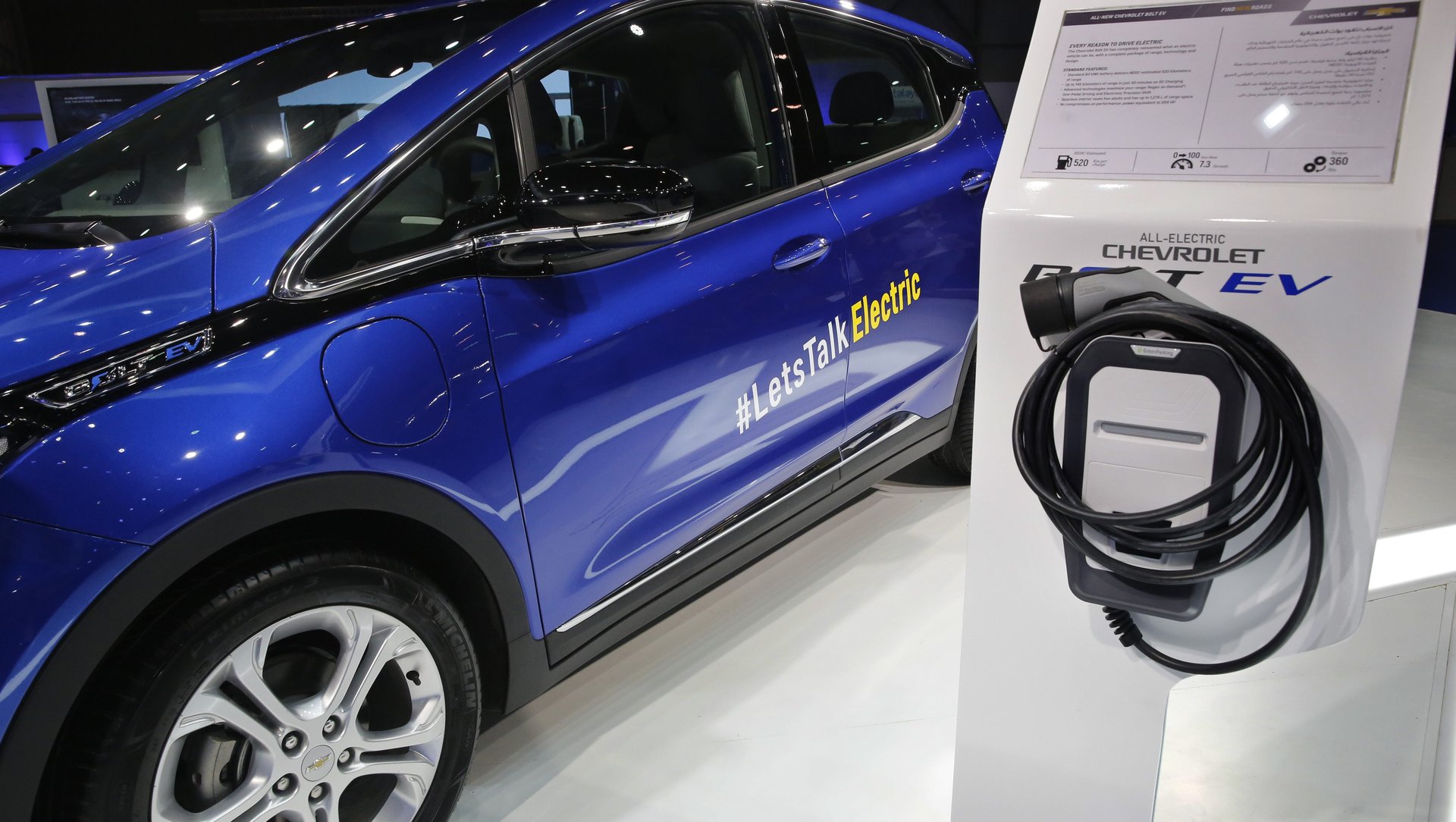By 2038, the world will buy more passenger electric vehicles than fossil-fuel cars
Car makers are busy electrifying their vehicles, but they’ll still have to wait as much as two decades before consumers buy more electric cars than conventional fossil-fuel ones.


Car makers are busy electrifying their vehicles, but they’ll still have to wait as much as two decades before consumers buy more electric cars than conventional fossil-fuel ones.
Bloomberg New Energy Finance, the media company’s research service, predicts that sales of passenger electric vehicles (EVs) will reach 50 million by 2038, when they will exceed the 47 million units of conventional passenger vehicle sales, according to the organization’s 2019 outlook today (May 15). The gap will increase as sales of passenger EVs reach 56 million, or 10 million more than sales of those powered by internal combustion engines, two years later.
BNEF’s prediction marks a significant increase from present passenger EV sales—conventional passenger vehicle sales in 2018 were about 85 million units, while passenger EVs clocked in at around 2 million. China, the world’s largest EV market, contributed to about half of those, with sales of both battery EVs and plug-in hybrids.
Yet the roughly one million units only accounted for around 4% of the total passenger cars sold in China last year, while sales of passenger EVs in the US made up around 6% of its total passenger car market, according to the Sierra Club environmental group.
The prediction comes as the auto industry is likely entering a recession, according to an analysis by Canada-based global investment bank RBC Capital Markets. The auto slowdown is likely a combination of many factors, including the world’s growing dislike of petrol products amid increasing worry about global warming and air pollution. The age of ride-sharing has also had an impact on car ownership.
Electric cars should follow a different trajectory. China, the world’s largest auto market, for instance, last year saw its first contraction in auto sales in two decades. The slowdown continues according to the latest sales figure (link in Chinese) in April. Yet its EV sales continue to grow.
In China, the share of passenger EV sales in overall EV sales has increased as the government phases out generous support such as subsidies to both manufacturers and buyers. But the rest of the world is catching up. BNEF says China will go from accounting for nearly half of all passenger EVs sold in 2025, to only around a quarter in 2040, or around 15 million. It will be followed by Europe and the US, which will take up around 20% and 16% separately.
EV sales might overtake conventional ones faster if more countries turn goals and pledges into law. Nine countries such as Denmark, Italy, and Norway, have said they will ban internal combustion engines but few of those claims have become law. China hinted in 2017 it would ban fossil-fuel cars, but didn’t set a date yet—though it has basically nixed building new car factories that only make such cars from this year.
It’s possible even as EV sales catch up with or overtake conventional models, it could take a little while more before there are more of them on the roads, since the enormous stock of combustion-engine cars need to come to the end of their lives, as Quartz earlier noted:
Yet it will be decades before these new cars can displace their conventional counterparts. Carmakers must design new vehicles, clear existing stock, and wait for the fleet to turn over as drivers trade in old cars (in the US, that’s about 11 years). It takes about 18 years for just half of vehicles on the road to comply with a new law, estimates FleetCarma. As the average vehicle is staying in circulation longer, cars being bought today will easily run into the proposed bans in some countries.
Looking for more in-depth coverage? Sign up to become a member and read more in-depth coverage of China’s electric-car boom in our field guide.